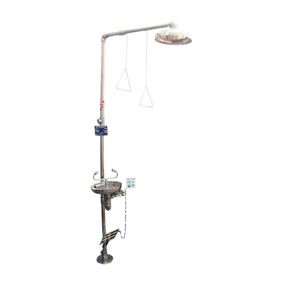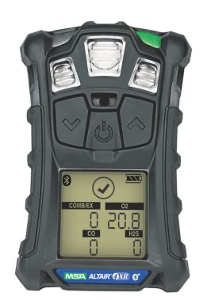FIRE RESISTANCE CABLE
- Brand: FIRE SOLUTION TECHNOLOGY
FIRE RESISTANCE CABLES are specially designed electrical cables that are engineered to maintain circuit integrity during a fire. Unlike standard cables, which can fail under high temperatures and fire conditions, fire resistance cables are constructed with materials that prevent them from melting or spreading flames. These cables play a crucial role in ensuring safety in buildings by maintaining power supply to critical systems even in the event of a fire. This comprehensive guide explores the importance, advantages, and various uses of fire resistance cables in detail.
#### Importance of Fire Resistance Cables
1. **Safety Assurance**: The primary importance of fire resistance cables lies in their ability to prevent the spread of fire through electrical circuits. In buildings, especially high-rise structures and critical infrastructure like hospitals and data centers, ensuring that electrical systems remain operational during a fire is crucial for safety and emergency response.
2. **Compliance with Regulations**: Many building codes and regulations mandate the use of fire resistance cables in specific applications to ensure compliance with safety standards. This is particularly important in regions prone to fires or in buildings where large numbers of people gather.
3. **Protection of Critical Equipment**: Fire resistance cables protect critical electrical equipment from damage during fire incidents. By maintaining electrical continuity, these cables minimize the risk of equipment failure and subsequent loss of functionality.
4. **Reduced Risk of Electrocution**: During a fire, standard cables can pose a significant risk of electrocution due to exposed live wires. Fire resistance cables are designed to minimize this risk by containing the fire within the cable itself and preventing the spread of electrical currents to unintended paths.
#### Advantages of Fire Resistance Cables
1. **High Temperature Endurance**: Fire resistance cables are designed to withstand high temperatures for extended periods without losing their functionality. This is achieved through the use of heat-resistant materials in their construction.
2. **Low Smoke Emission**: Unlike standard cables, which can emit toxic smoke when exposed to fire, fire resistance cables are engineered to emit low levels of smoke. This characteristic is critical in preventing smoke inhalation hazards during evacuation efforts.
3. **Maintained Circuit Integrity**: The core advantage of fire resistance cables is their ability to maintain circuit integrity during a fire. This ensures that power supply continues to critical systems such as emergency lighting, fire alarms, and communication systems.
4. **Durability**: Fire resistance cables are generally more durable than standard cables due to their construction materials. This durability extends their lifespan and reduces the frequency of maintenance and replacement.
5. **Versatility**: These cables are available in various types and configurations to suit different applications and environments. They can be used in both indoor and outdoor settings, depending on specific requirements.
#### Types of Fire Resistance Cables
There are several types of fire resistance cables, each designed for specific applications and fire resistance ratings:
1. **Mineral Insulated Cables**: These cables consist of copper conductors enclosed within a magnesium oxide powder insulation. They are known for their high fire resistance and are commonly used in high-risk environments.
2. **Fire Rated Cables**: These cables are designed with special sheathing and insulation materials that prevent them from spreading fire. They are often used in commercial and residential buildings where fire safety is a priority.
3. **Enhanced Fire Performance Cables**: These cables go beyond standard fire resistance ratings and offer enhanced protection against fire propagation and electrical failure. They are used in critical infrastructure and high-density occupancy buildings.
4. **Halogen-Free Cables**: These cables are designed to emit low levels of toxic smoke and fumes when exposed to fire. They are preferred in environments where human safety and environmental impact are primary concerns.
#### Uses of Fire Resistance Cables
Fire resistance cables find applications in various sectors and environments where fire safety and continuity of electrical supply are critical:
1. **Commercial Buildings**: In office complexes, shopping malls, and hotels, fire resistance cables ensure that essential services such as emergency lighting and communication systems remain operational during a fire.
2. **Industrial Facilities**: Manufacturing plants, refineries, and chemical processing facilities use fire resistance cables to protect critical equipment and prevent fire spread in hazardous environments.
3. **Residential Buildings**: Fire resistance cables are increasingly used in residential construction to enhance fire safety measures and comply with building codes and regulations.
4. **Transportation Infrastructure**: Airports, train stations, and tunnels utilize fire resistance cables to maintain electrical supply to vital systems and ensure safe evacuation routes during emergencies.
5. **Healthcare Facilities**: Hospitals and medical centers rely on fire resistance cables to safeguard electrical equipment and maintain uninterrupted power supply to life-saving equipment and patient care areas.
6. **Data Centers**: These facilities house sensitive electronic equipment and servers that require continuous power supply. Fire resistance cables protect these critical assets from fire damage.
7. **Educational Institutions**: Schools, colleges, and universities use fire resistance cables to ensure the safety of students and staff during fire incidents while maintaining essential services.
#### Installation and Maintenance Considerations
Proper installation and regular maintenance are crucial for ensuring the effectiveness of fire resistance cables:
1. **Installation by Qualified Professionals**: Fire resistance cables should be installed by trained and certified electricians who understand the specific requirements and installation guidelines.
2. **Periodic Inspection and Testing**: Regular inspections and testing of fire resistance cables are essential to verify their continued functionality and compliance with safety standards.
3. **Replacement of Damaged Cables**: Damaged or degraded fire resistance cables should be promptly replaced to maintain the integrity of the fire protection system.
#### Conclusion
Fire resistance cables play a vital role in safeguarding lives and property by preventing the spread of fire through electrical circuits. Their ability to maintain circuit integrity and withstand high temperatures makes them indispensable in critical infrastructure and high-risk environments. By complying with safety regulations and implementing fire resistance cables, buildings can enhance their overall fire safety measures and protect occupants during emergencies. As technology advances, the development of new materials and innovations in cable design will continue to improve the effectiveness and reliability of fire resistance cables in ensuring fire safety worldwide.
Only logged in customers who have purchased this product may leave a review.
Please Login To Download Attachment
General Inquiries
There are no inquiries yet.









Reviews
There are no reviews yet.